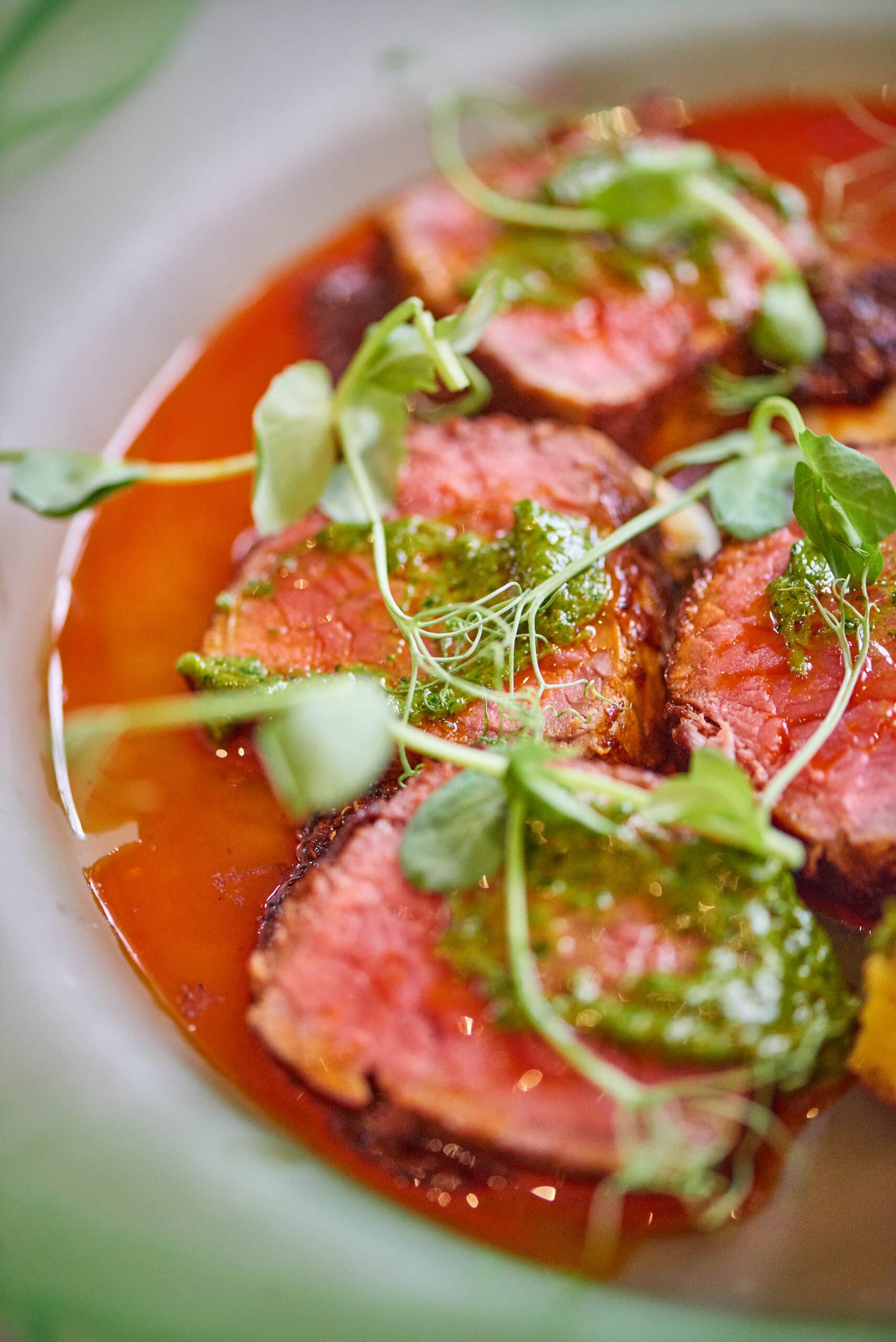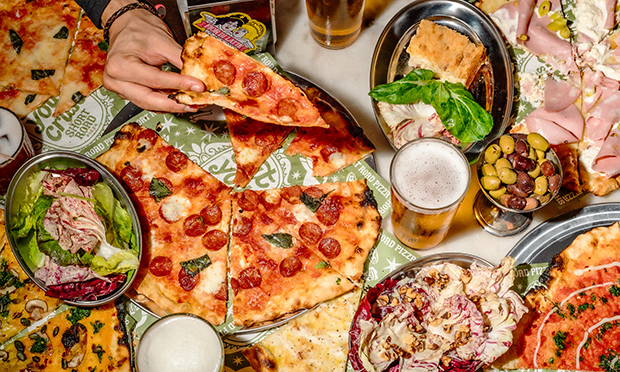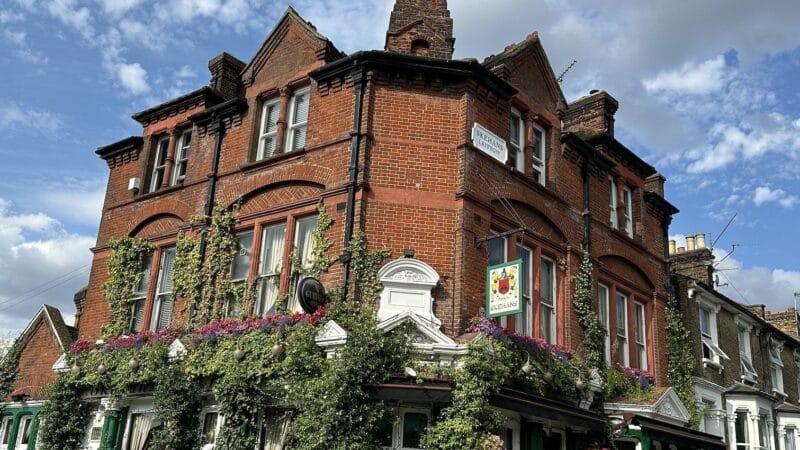41 Broadway Market, London E8 4PH
In my halcyon, and rather hazy youth, I travelled around Peru and Bolivia, admittedly seeing more of the inside of hostel bars than walls of venerable temples. But what sticks with me, after all these (many) years, is the range and breadth of the culinary diversity in that enchanted strip of South America.
Robert Ortiz’s (of Lima fame) original restaurant is situated in an old bank in Moseley and has been catering to the second city’s residents for 4 years now with a tumble of accolades and praise. So, when the opportunity arose to visit the new London outpost, I almost crawled out of my skin with anticipation.
The southern arm is decidedly hipper (Broadway Market being its usual nifty self). Medium size, dark blues, earthy oranges, with a stark black band around the bottom of the room. Downlights and exposed autumnal-hued bulbs make one feel like talking softly but aren’t great for Instagram snaps of your cocktails. The Andean cross that gives the restaurant its name is lovingly stitched and printed on napkins, and other things throughout the evening. Chakana or stepped cross is an ancient pre-Spanish symbol, often referring to bridges or crossing over.
So how does the restaurant make the leap (see what I did there) between the two cities? After all, in Birmingham, they are running unopposed, as the only Peruvian restaurant. In the smoggy clamour of our fair capital, things are a little more crowded (thankfully).
Purple corn bread (assumed beetroot yet was fended off as the chef’s secret) is dunked in a stunning garlic tzatziki-like creamy concoction, and the evening is off and running.
Now this isn’t the acid whiff, piled-high plates of ceviche you get in Lima, or the steaming mountains of lomo saltado. Nope, amigos, this is fancy fare, small, delicate, and pretty as a June bug. Throughout the vibrant natural sauces are used as dobbed spot embellishments, in the style of impressionist painters. Ortiz, the Monet of food? Marbling patterns arrive, with structures that are more like sculptures poking out from the kaleidoscopic swamps.
The tuna ceviche has rings of shocking pink, Salsa verde green, and yellow Aji Amarillo. Sitting quivering around the hunks of fish, their own deep pink, thin shavings of radish and cucumber make it a sight of rare beauty. Like with all food art, I feel sacrilegious ruining it, but one must, mustn’t one? The citrus kick and tuna muscularity are pleasant, but a little vague and pared back in taste, much more a looker than a doer.
Again, the octopus causa resembles three eggs of some very colourful alien invader. Balls of sweet yellow potatoes, with little hats of shaved things, and the splotches of green, yellow, and pink that keep cropping up. Rather lacking in the cephalopod fishiness, the amount of tentacle meat is minute and easily missed, more like very good-looking spud-canapés.
The menu of corn, sea bream, or tuna ceviche, and the beef tartare and asparagus causa give good options for vegans and non. But the repeated ornamental sauces create a rather similar experience for our two very different starters.
Clutching my Cholopolitan (a pisco passionfruit twist on the usual tartness of the Sex and the City tipple of choice) and then slurping up the rest of my partner’s Oaxaca Cobbler (with all its mezcal bonfire and blood orange undercurrent), the evening’s vibe shifts. The late afternoon lull blooms, corpse flower-esque into full dinner service swing and chatter. Illuminated bottles of pisco remind us of the country’s most raucous spirit, as the space begins to vibrate with night-time vivacity. Coups of the white classic sours, over which Chile and Peru have been arguing since the 1500s, are a must-try. The addition of passion fruit liquor is a new one for me. But after a year of making these sticky egg-infused wonders in Cusco, I am pleased with my much less triggering drink choices.
Confit-suckling pig has that required sheaf of burned skin, resting in brown ocopa sauce, with sweet corn tamal softness to smush into the pork. The meat is a little chewy but is saved by the mighty sauce, a sea of gravy-colored complexity thanks to the black mint huacatay plant. Drag the lightly burned vegetable fronds around in this lake of peppery wonder, and you’ll almost forget the disappointing carne. Beef pachamanca is a rather tough affair, again prettily plated, with a log of roasted potato cooked perfectly. An army of ant-like quinoa seeds incrusting the cylinder of root veggies. The sweet garlic and aji panca combine for a light chili warmth that doesn’t overpower.
Thankfully, the focus on carbs, corn, maize, and potatoes means that two starters and a main each will leave you happily filled. For the animal-nibbling abstainers, there are Andean stews, the expected roasted aubergine, and piquillo peppers. Along with a good-sized fish section, involving hot red mullet ceviche, and braised octopus (that hopefully has more of everyone’s favourite three-hearted sea creature than the causa starter).
Where many restaurants stumble at the sweets, Chakana soars. An Amazonian chocolate mousse that you can feel driving up your blood pressure, as it should. Guava and algarrobina syrup spinning out in circles like an elliptical satellite’s orbit, a handsome and toothsome dessert. Alfajores, cookies in the shape of the Andean cross. Little brittle jammy dodgers made of edible compacted dust, that cease to exist in your fingers or mouth. Quince and dulce de leche for the creamy hearts, crumble them into their ice cream neighbour, and savour a very good final flourish.
While enjoying a glass of Copero de Cassalla, a refreshing white wine from a country that is not known for viniculture (pisco is grape-based of course but with much more bite), there is so much good to appreciate here. Tables of shrieking friends enjoy a raucous reunion, cocktails zip overhead, and a walk to the toilet will pass you by the kitchen, where snatches of Spanish float out through the hatch. The rosy tinge a good dessert can bring.
Everything is so almost right. The stunning plates’ colours mirror the country’s topographic range. Oranges and browns of the arid coast, the pinks and bright greens of the jungles, and the blues and whites of the Andes mountains. Visually varied and exciting yet the tongue hasn’t quite caught up with the eye. For the hefty price tag (£160 for two people) and competition from Lima and various other amazing Peruvian restaurants, Chakana might struggle in London’s saturated market. Although, to be fair, do they have divine desserts in the shape of Inca iconography? I heavily doubt they do.
Book a table to try those Alfajores, click here!



